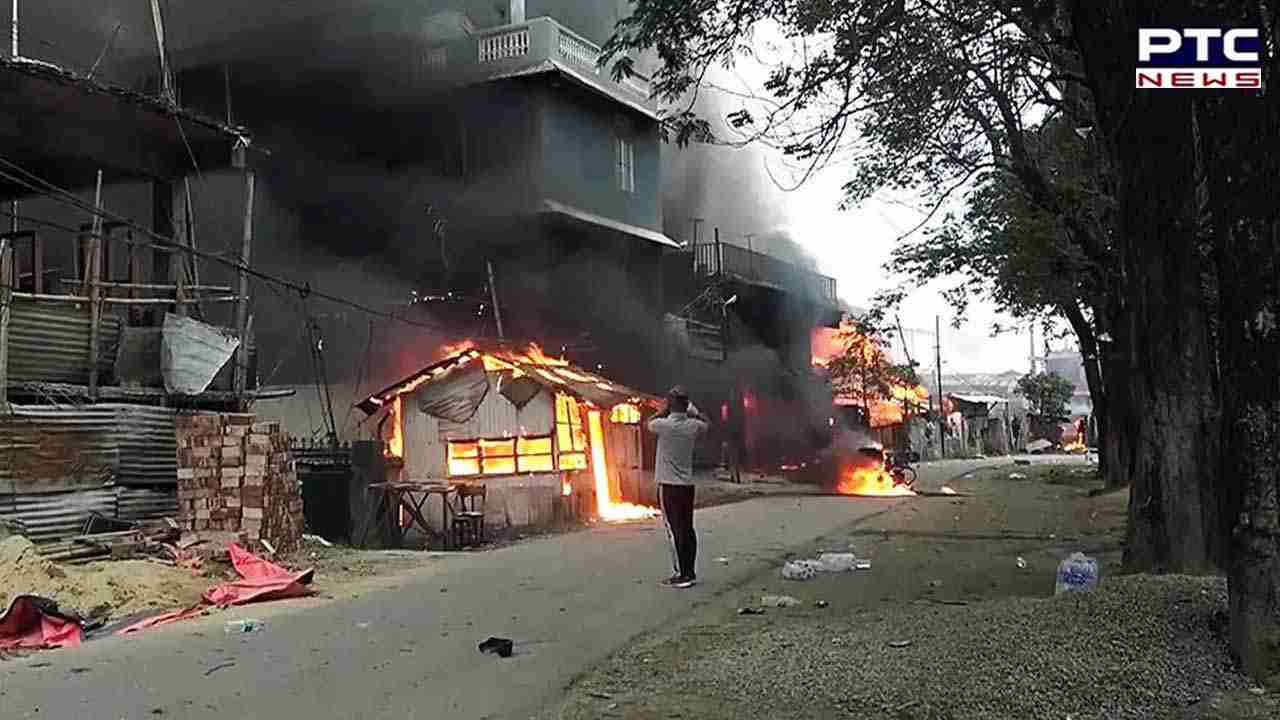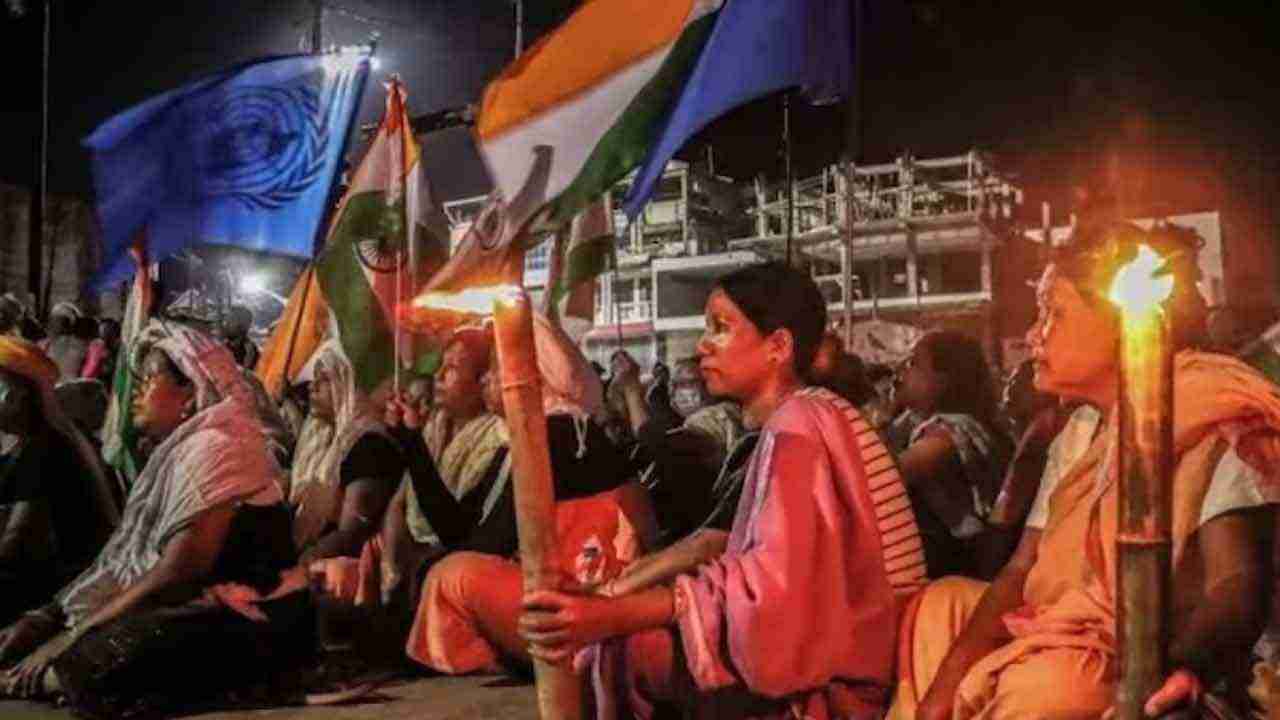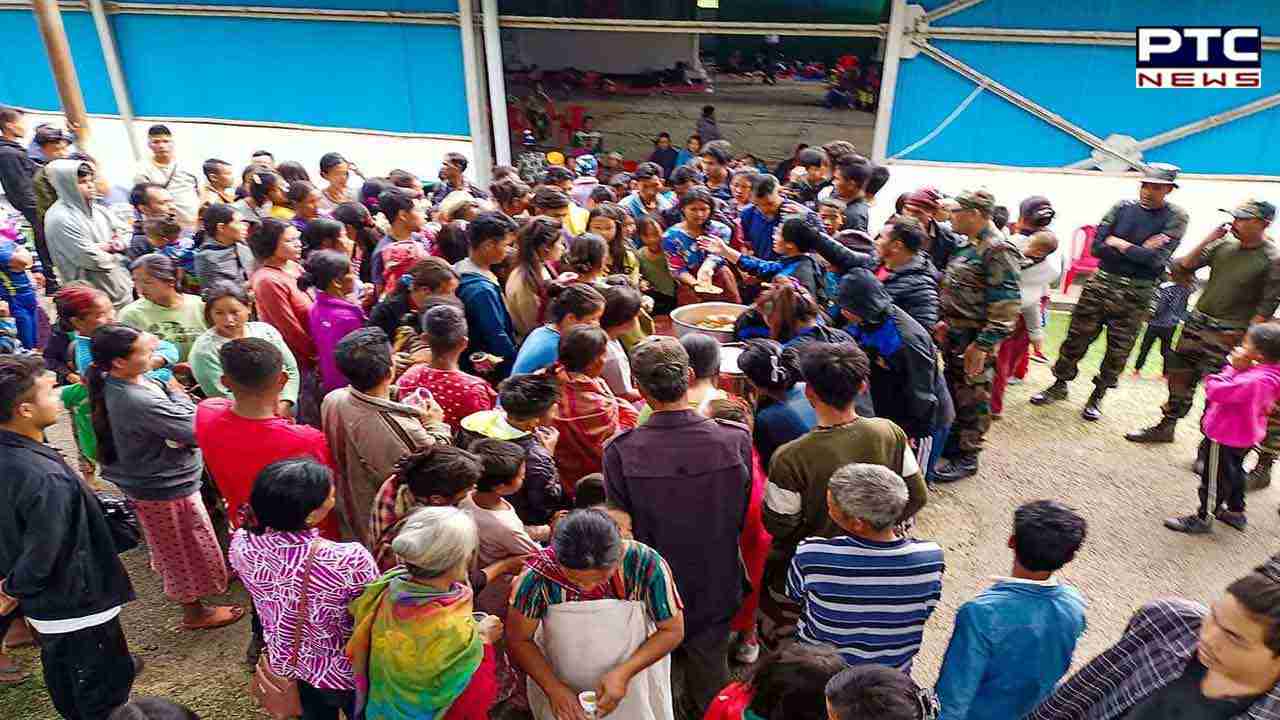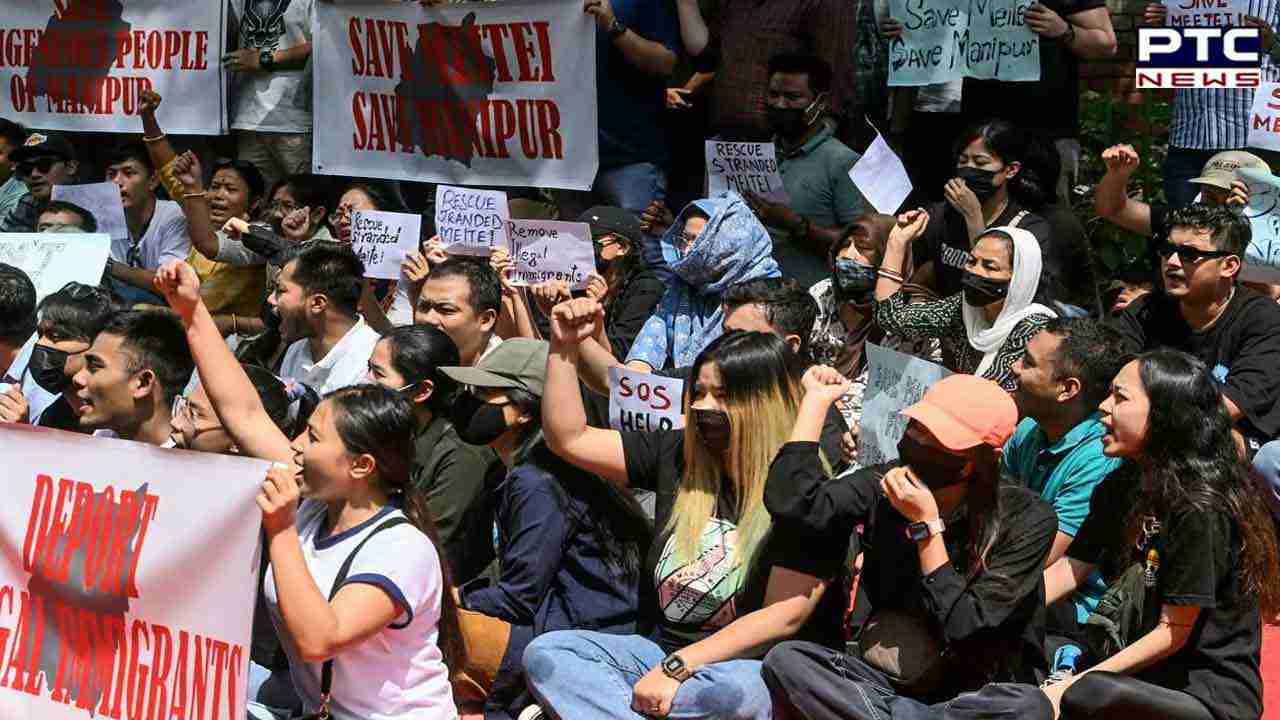

Manipur Violence Unrest: Deepening ethnic suspicions fuel escalating tensions
Manipur Violence Unrest: Recent violence, arson, and chaos have gripped various districts in Manipur, including Churachandpur, Imphal East, Imphal West, Bishnupur, Tengnoupal, and Kangpokpi, over the past three days. District magistrates were given shoot-at-sight orders by the Manipur government, adding to the intensity of the situation.
The unrest began on May 3, triggered by the All Tribal Students Union Manipur (ATSUM) holding a solidarity march across districts to oppose the Manipur High Court's order. The court had directed the state government to recommend the inclusion of the Meitei community in the Scheduled Tribes (STs) list to the Centre.

Amid escalating violence on May 4, the Centre invoked Article 355 of the Constitution, granting emergency powers to protect the state from external aggression or internal disturbances. Consequently, convoys of Army, Assam Rifles, Rapid Action Force, and local police personnel were deployed in affected areas.
The aftermath of the violence has resulted in over a dozen reported fatalities, hundreds of injuries, and more than 9,000 people from the Kuki and Meitei communities, among others, being displaced. Approximately 9,000 individuals were rescued and provided shelter by defense forces in the affected regions. The destructive wave has led to the devastation of buildings, homes, vehicles, and other properties, but the official fatality count remains unconfirmed.
As the violence and chaos continue for the third day, authorities are struggling to regain control of the situation, despite the Army's flag marches. Mobile data and broadband connections remain suspended, forcing communication through alternative means.
Amidst the unrest, I dictated this piece over the phone to a Frontline reporter at the Chennai office after relocating my family from our home in Khuman, Bishnupur. The decision was made after shots were fired close to a Village Defence Forces training center, less than a kilometer away.
_dfcb102ba39593acd2c27ef7fc02293c_1280X720_2ea5296a9c09aacfb73ee9608e0f5408_1280X720.webp) At present, around 5,000 people have been relocated to safe homes or shelters in Churachandpur, another 2,000 in Imphal Valley, and 2,000 in the border town of Moreh in Tengnoupal district. Police sources revealed that an armed mob in Torbung, Churachandpur district, targeted individuals from the Meitei community during the solidarity march on May 3. This triggered retaliatory attacks in the Valley districts, resulting in extensive violence for over three hours. Shops and houses in Torbung were vandalised and set ablaze during the turmoil.
At present, around 5,000 people have been relocated to safe homes or shelters in Churachandpur, another 2,000 in Imphal Valley, and 2,000 in the border town of Moreh in Tengnoupal district. Police sources revealed that an armed mob in Torbung, Churachandpur district, targeted individuals from the Meitei community during the solidarity march on May 3. This triggered retaliatory attacks in the Valley districts, resulting in extensive violence for over three hours. Shops and houses in Torbung were vandalised and set ablaze during the turmoil.
Chief Minister N Biren Singh's plea for calm has so far been ineffective. While attributing the violence to a misunderstanding, he assured that the government is taking all necessary measures to restore law and order, including calling in additional paramilitary forces. Both Central and State forces have been instructed to take strong action against any individuals or groups involved in violence.

Indefinite curfews have been enforced in Meitei-dominated districts like Imphal West, Kakching, Thoubal, Jiribam, and Bishnupur, along with Kuki-dominated Kangpokpi and Tengnoupal districts. Approximately 500 people from the Kuki community have sought refuge at the CRPF camp in Lamphelpat, Imphal.
In the Motbung area of Kangpokpi district, where the Kuki community has a significant presence, more than 20 houses were set on fire. Meanwhile, over 1,000 people from the Meitei community have fled the Kuki-dominated Churachandpur district.
Reports of violent incidents have also emerged from Moreh, Tengnoupal district's border town, where numerous Meitei houses were set ablaze. Instances of violence have been reported from various parts of the capital city, Imphal, adding to the escalating tensions in the region.
The demand for inclusion of the Meitei community, comprising 53 per cent of Manipur's population and predominantly residing in the Manipur Valley, in the Scheduled Tribes (ST) list seems to be the immediate trigger for the ongoing ethnic unrest. However, beneath this proximate cause lies a simmering anger fueled by multiple factors.
One significant aspect contributing to the unrest is the government's crackdown on reserved and protected forests in the State's hill regions. The tribal communities residing in these areas feel the brunt of the government's measures, and this has added to the discontent. Moreover, the Kukis, in particular, feel persecuted and resent the government's tough stance against what they perceive as "illegal immigrants" from Myanmar, specifically the Chin people of the same ethnic group.

The Chief Minister of the Bharatiya Janata Party (BJP) has adopted a hardline approach to address the encroachment of reserved and protected forest areas in the Manipur hills, mainly due to concerns about extensive poppy cultivation on the land. While the government views this action as part of a broader anti-drug campaign, it has also made the sweeping assumption of labeling all Kuki people as "drug lords," which further aggravates the situation.
Additionally, there is a pressing issue of land scarcity in Manipur, leading to significant tensions among various communities. As the tribal village populations grow, they naturally expand into the surrounding forest areas they consider historically and ancestrally theirs. However, this clashes with the government's perspective, causing disputes over land usage and rights. Simultaneously, the Meitei community residing in the valleys expresses frustration as they are restricted from purchasing land in the hill regions, while tribal individuals can buy land in the valleys.

The government's lack of a comprehensive policy on recognizing new villages and the absence of a transparent forest policy in Manipur have further exacerbated the unrest. Even within the ruling party, there is resentment over the government's handling of these critical issues.
Overall, the ethnic unrest in Manipur is a complex interplay of historical, territorial, and policy-related factors, necessitating a thoughtful and inclusive approach to address the underlying grievances and restore peace and harmony in the region.
As tensions continue to grip Manipur, a series of protest rallies in various hill districts marked the onset of unrest. On March 10, mass demonstrations took place in Churachandpur, Ukhrul, Kangpokpi, Tengnoupal, Jiribam, and Tamenglong, where thousands of Kuki tribe members voiced their discontent with the BJP-led government's selective targeting of Kukis. The protesters specifically opposed the eviction of residents from K. Songjang village during the rallies.
The Indigenous Tribal Leaders Forum (ITLF), a newly-formed conglomerate representing various tribal groups, including the Kukis, had orchestrated the rallies, demanding recognition of their grievances. The State government, in response, took a retaliatory stance on March 11 by withdrawing from the ongoing tripartite talks.

The government also canceled the Suspension of Operation (SoO) agreement with two armed political groups, the Kuki National Army and the Zomi Revolutionary Army. The government accused these groups of inciting protesters during the rallies.
The SoO agreement, a ceasefire pact signed by the Central and State governments with the United People's Front and the Kuki National Organisation, both conglomerates of tribal armed outfits in the hills, dates back to 2008. The Kuki National Army and the Zomi Revolutionary Army are both factions within the Kuki National Organisation.
The Kuki Inpi Manipur (KIM), a prominent tribal organization, emphasized that the protests stemmed from public discontent over the government's alleged neglect of the Scheduled Hill areas and its handling of Articles 370 and 371 C of the Constitution, which apply to Manipur. The Chief Minister's remarks labeling rally participants as "encroachers, poppy cultivators, drug smugglers, and illegal immigrants" drew strong objections from the KIM.
As the unrest in Manipur continues, the complexities of historical grievances and government responses pose significant challenges in finding a resolution to the ongoing conflict.
The recent High Court order, demanding a government recommendation for granting Scheduled Tribe (ST) status to the Meitei community in Manipur, has ignited further tensions in the already volatile state. Even within the Meitei community, there is opposition to this move, as their historical claims emphasize their settled agricultural identity dating back over 2,000 years.
The invocation of Article 355 by the Centre in response to the situation in Manipur has raised concerns, as it appears to be an extreme measure. This move prompts speculation about underlying motivations that may extend beyond simply addressing the ongoing violence. The considerable deployment of security forces in the State adds to the suspicion that there could be broader strategic interests at play, possibly connected to Manipur's significance as a border state.

While there are signs of some semblance of normalcy returning, the true test lies in the effectiveness of the BJP-led Central and State governments in forging a sustainable agreement that garners acceptance from all parties involved. The path to achieving a lasting resolution remains uncertain, and time will reveal whether a comprehensive and inclusive approach can quell the deep-rooted tensions and restore harmony in Manipur.
Also Read: Manipur violence: 4 main accused arrested in Manipur horrific viral video case
- With inputs from agencies
